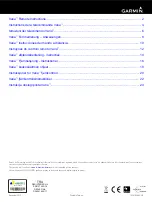
11
Gigaset N870 IP PRO / LUG IE-UK_IM en / A31008-XXXXX-XXXX-X-XX / intro.fm / 8/24/18
V
e
rsio
n 2,
06
.0
8.
201
0 / M
o
d
u
leV
e
rs
io
n 1.
0
Introduction
Overlapping and synchronising
For interference-free cooperation in a multi-cell DECT network, the base stations must synchronise.
In order to synchronise the base stations and ensure a smooth handover, the cells must overlap.
A sufficiently high number of overlapping zones between neighbouring cells must be ensured.
•
For synchronisation, neighbouring cells must mutually receive DECT signals having continually
good quality.
•
For a handover, a handset must have a connection of sufficient quality to both base stations.
Information on the values required is in Section
The more densely the base stations are installed, the greater the overlap. Here, a compromise
must be found between keeping the area relatively open and installing the lowest possible
number of base stations.
The conditions for synchronisation overlap require a shorter distance between the base stations
than for a handover. However, the strict requirements are only relevant for base stations along
the synchronisation path. Neighbouring base stations that do not synchronise directly with each
other can be installed further away from each other.
If all the connection channels are busy, load balancing is used to find another base
station able to take the call request. Load balancing should only be deployed
in exceptional cases however. Design the network such that enough connections
are always available. In areas where high traffic volumes are expected for example,
install a second base station.
Handover overlap
Synchronisation overlap












































